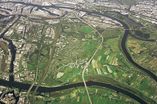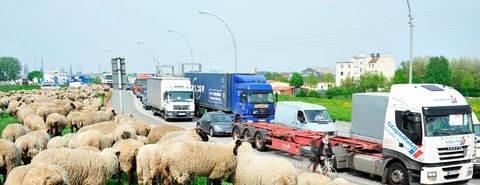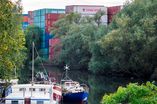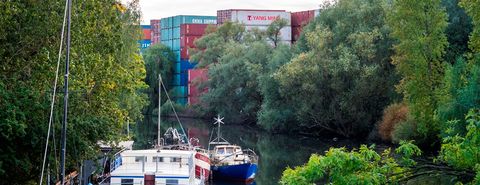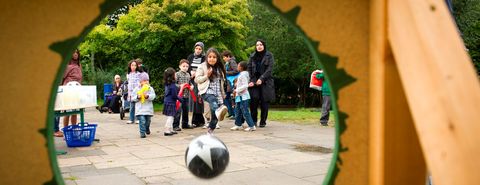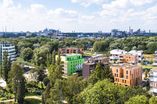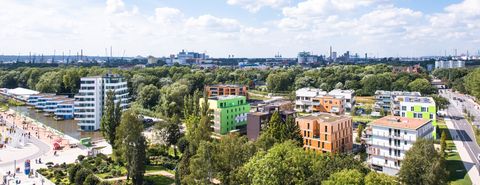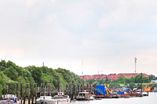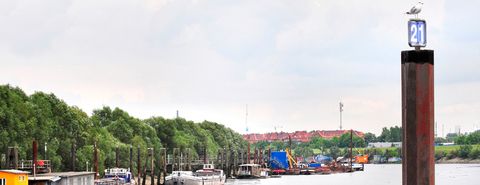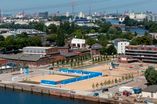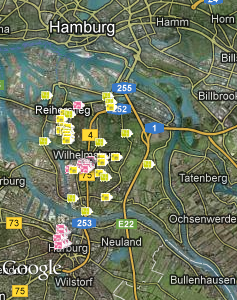Project Area
Every International Building Exhibition has, and needs, its own special location. In Hamburg it is the Elbe islands of Wilhelmsburg and Veddel, and Harburg Upriver Port. There is probably no better place in Germany to investigate the future of our cities, as it presents us with all the problems and opportunities. The issue of how different cultures can coexist, for instance. Over one hundred nationalities live here on just a few square miles. Or the question of how we can protect the climate, which is especially important for a flood-prone location like Wilhelmsburg.
The largest river island in Europe, Wilhelmsburg lies right in the middle of Hamburg. Like its smaller neighbour, the island of Veddel, it sits in the River Elbe between Hamburg city centre on the north bank and Harburg on the south. Bordered by the north and south Elbe, the ports of Hamburg and Harburg, and intersected by numerous canals and oxbow lakes, the Elbe islands’ defining element is water.
Covering some 14 square miles, Wilhelmsburg is also Hamburg’s biggest district, in terms of area at least. Yet only 50,000 people live there. The population density is very low compared to the districts on the north bank of the Elbe. In Eimsbüttel, for instance, just as many people live on a tenth of the space. Large parts of Wilhelmsburg are decidedly green: marshes, paddocks, agriculture, and alluvial forests define the landscape even today.
In 2004 policymakers in Hamburg came up with the “Leap across the Elbe” approach for developing the southern districts of the city. In the eyes of many Hamburg residents and its visitors, the city ends to all intents and purposes at the jetties on the north bank of the Elbe: everything to the south of this point is a blank spot on the map, and indeed the river itself also acts as a psychological barrier.
It is a view that Hamburg neither can nor wants to afford any more. For the booming metropolis has a permanent need for residential and commercial areas, and further development to the south in particular, that is, on the Elbe islands and in Harburg, is an option. As far back as the 1960s the then mayor Herbert Weichmann observed that “Hamburg’s future lies in the south”. This remark is now more relevant than ever. Nearly fifty years on, two urban planning measures are helping to realise the “Leap across the Elbe” decision: the International Building Exhibition IBA Hamburg 2013 and the international garden show Hamburg 2013 (igs).
